High Court of Australia abolishes ‘Chorley Exception’
In 2018 we provided an update in respect of the matter of Pentelow v Bell Lawyers Pty Ltd [2018] NSWCA 150.
In that decision, the New South Wales Court of Appeal held that the ‘Chorley exception’ applied to barristers as well as to solicitors.
The Chorley exception is an exception to the well-established rule that a self-represented litigant is not entitled to professional costs for acting for him or herself in legal proceedings and provides that self-represented litigants who are solicitors are entitled to recover professional costs for work they have undertaken in legal proceedings.
In December 2018, the High Court of Australia granted special leave to appeal that decision and on 4 September 2019, allowed the appeal and overturned the decision of the New South Wales Court of Appeal.
Significantly, in doing so the High Court effectively abolished the Chorley exception in Australia.
Background and proceedings below
The case involved Janet Pentelow, a barrister who brought proceedings in both the Local Court and Supreme Court of New South Wales, seeking to recover unpaid fees following a dispute with her client (who had been her instructing solicitors). Although the Supreme Court awarded costs in Ms Pentelow’s favour in respect of both proceedings, the costs assessor later rejected in its entirety that part of the costs claimed by Ms Pentelow for preliminary work that she had undertaken herself prior to engaging legal representation, such as drafting the originating process and her affidavit of evidence.
During a subsequent review by the Costs Review Panel, Ms Pentelow’s claim for costs relating to work that she had undertaken was again disallowed on the on the basis that, relevantly, the Chorley exception did not extend to barristers. Ms Pentelow subsequently appealed to the District Court of New South Wales, however was unsuccessful on the same basis and thus sought judicial review of the decision pursuant to s69 of the Supreme Court Act 1970 (NSW).
In the New South Wales Court of Appeal, Beazley ACJ (with whom Macfarlan JA agreed) held that the Chorley exception extended to the work undertaken by a self-represented barrister, so long as that work was not expressly proscribed by the Bar Rules. Significant in Beazley ACJ’s reasoning was the fact that there was now significant overlap in the work undertaken by both solicitors and barristers and the costs of each may be assessed under the same costs assessment processes.
The decision in the High Court of Australia
On appeal, Keifel CJ, Bell, Keane and Gordon JJ commenced their analysis by noting that:
the Chorley exception is not only anomalous, it is an affront to the fundamental value of equality of all persons before the law. It cannot be justified by the considerations of policy said to support it.
Their Honours considered the rationale expressed to underlie the Chorley exception, which is that the professional skill and labour exercised by a solicitor litigant may be measured by the law, whereas the “private expenditure of labour and trouble by a layman cannot be measured”.
After noting that there was no reason in principle why the reasonable value of the time of any litigant could not be measured (citing the example of valuing the provision of labour in a quantum meruit claim), their Honours went on to note that:
there is an air of unreality in the view that the Chorley exception does not confer a privilege on solicitors in relation to the conduct of litigation… A privilege of that kind is inconsistent with the equality of all persons before the law.
There were only two previous decisions of the High Court of Australia in which the Chorley exception is referred to: Guss v Veenhuizen [No 2] and Cachia v Hanes (Cachia Decision).
The majority noted that because the existence of the Chorley exception in Australian common law was not in question in either decision, those decisions did not bind a later court to accept the application of the Chorley exception.
Furthermore, the majority in the Cachia Decision was critical of the decision in Chorley, describing it as “somewhat anomalous” and stating that the justification for the exception was “somewhat dubious”.The majority in Bell Lawyers noted that those criticisms “substantially undermine[d] the authority of the decision in Chorley” and that the possibility of a solicitor profiting from their participation as a litigant “is unacceptable in point of principle.”
Their Honours also cited the following statement of the majority in the Cachia Decision:
If the explanation for allowing the costs of a solicitor acting for himself are unconvincing, the logical answer may be to abandon the exception in favour of the general principle rather than the other way round.
Their Honours concluded that:
There is no compelling reason for this Court to refrain from taking the “logical step” identified in Cachia. The Chorley exception is not part of the common law of Australia.
The remaining judges agreed that the appeal should be dismissed. Both Gageler J and Edelman J agreed with the majority that the Chorley exception did not form a part of the common law of Australia. Nettle J, however, found only that the Chorley exception did not extend beyond solicitors to barristers.
Practical consequences
It is unclear how common it is for legal practitioners to undertake legal work in litigation on their own behalf.
The most likely example may be circumstances in which a sole practitioner or firm undertakes debt recovery proceedings on its own behalf. The apparent consequence of the decision is that a sole practitioner cannot recover legal costs from its opponent for work of this type. Whilst that may lead to an increase in firms outsourcing their own debt recovery, that outcome is consistent with the majority’s view that as a matter of policy, it is better that legal work be undertaken with sufficient professional detachment.
Where an incorporated legal practice (ILP) undertakes legal work such as debt recovery proceedings on its own behalf, it appears that the firm remains capable of recovering legal costs from its opponent, due to the legal detachment between the litigant (the ILP) and the practitioner undertaking the work (an employee of the ILP). Comments made by the majority, however, suggest that this position may be subject to review in future, in particular in respect of ILPs with a sole shareholder and director.
Phoenix company wound up following 'fictitious joint venture'
In insolvency and restructuring there is a special emphasis placed upon behaviour known as “phoenix activity”. Phoenix activity is where a new company is created to continue the business of an existing company. Typically, this will involve a company entering into a transaction with another related entity for the sale of its assets. This allows business to continue, however the new company will not have any of the liabilities that the original business had such as obligations to creditors, the ATO or employees.
While there are several legitimate and legal forms of restructuring or reorganising a company, it is particularly unwise to simply enter into such a scheme without first checking its legality. The consequences of doing so are very severe including: liability for a breach of directors’ duties, ASIC penalties, penalties under the Director Penalty Regime of the Taxation Administration Act 1953, and breaches of the Fair Work Act 2009 if the scheme involves the avoidance of employee entitlements.
The recent case of Yeo v Alpha Racking Pty Ltd [2019] FCA 1338 provides a guideline of circumstances that indicate phoenix activity is occurring. The case concerned an application bought by the liquidators of a company known as Alpha Storage. The application sought the winding up of a company known as Alpha Racking as well as the appointment of the plaintiff liquidators as its provisional liquidators. This application was bought due to a suspicion that the assets of Alpha Storage were wrongly being transferred to Alpha Racking for the purpose of defeating creditors.
After reviewing the evidence presented by the liquidators O’Bryan J concluded that a strong case that the directors of Alpha Storage were engaged in a plan to strip the assets of Alpha Storage and transfer them to Alpha Racking had been established. His Honour held at [34] that the phoenixing activity included:
(a) the creation of a false joint venture agreement between the companies;
(b) attempts to have customers pay Alpha Racking — and not Alpha Storage — money they owe to Alpha Storage;
(c) the creation of what appear to be false financial records, including financial statements, for Alpha Racking and Alpha Storage;
(d) the transfer of staff from Alpha Storage to Alpha Racking; and
(e) the setting up of a new financial accounting package for Alpha Racking and the transfer to it of “open” purchase orders that are the property of Alpha Storage.
At [35] his Honour explained how the evidence of the case indicated phoenix activity was taking place:
First, Alpha Storage has issued invoices to third parties, showing that it was a trading entity and not a “labour hire” firm.
Second, security interests have been registered in the name of Alpha Storage on the Personal Property Securities Register and finance agreements exist between Alpha Storage and various financiers (ANZ Bank, Macquarie Leasing Pty Limited, Toshiba, PCP Finance), again showing that Alpha Storage was conducting a trading business.
Third, a “LinkedIn” page gives a description of the business activities of Alpha Storage and there is no reference to a joint venture.
Fourth, the debt owed to the Commissioner of Taxation includes a significant liability for GST which indicates that Alpha Storage operated a significantly sized business.
Fifth, there is no reference to a joint venture in any of the documents provided to or obtained by the liquidators, including the financial accounts and taxation documents of Alpha Storage.
Sixth, the partner from BDO Melbourne who was responsible for preparing Alpha Storage’s accounts and tax returns confirmed that no mention was ever made of a joint venture arrangement and that Alpha Storage traded in its own right.
Seventh, the documents evidencing the lease for the Dandenong South and Brisbane premises are in the name of Alpha Storage. These documents post-date the purported joint venture agreement. Further, the leasing agent of the Dandenong South premises was unaware of any joint venture.
Based on the above findings, his Honour agreed that a strong prima facie case of serious misconduct and potential fraud in the conduct of Alpha Racking’s affairs had been established. The application was therefore granted.
In addition to the Yeo case, the ATO and ASIC also include information on the warning signs of phoenix activity including:
- the company fails and cannot pay its debts
- the company changes its name to its Australian Company Number (ACN) and a new company is registered, often with a similar name to the old company
- the directors or former directors transfer the assets from the old company to the new one for less than market value
- the new company operates the same or similar business as the old company, sometimes from the same premises, using the same assets
- the new company often uses the same bank account, advertising material, websites or contacts details as the old company
- the people involved in managing the old company control the new company, either as the directors or controllers.



